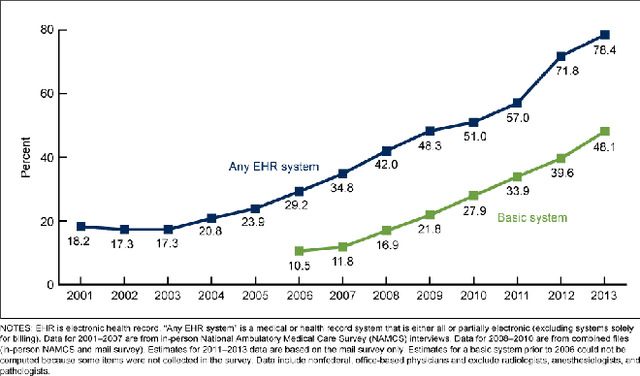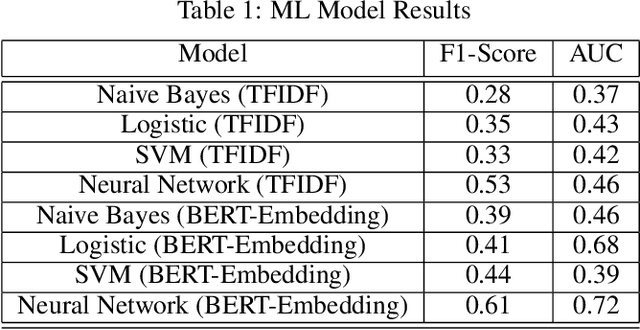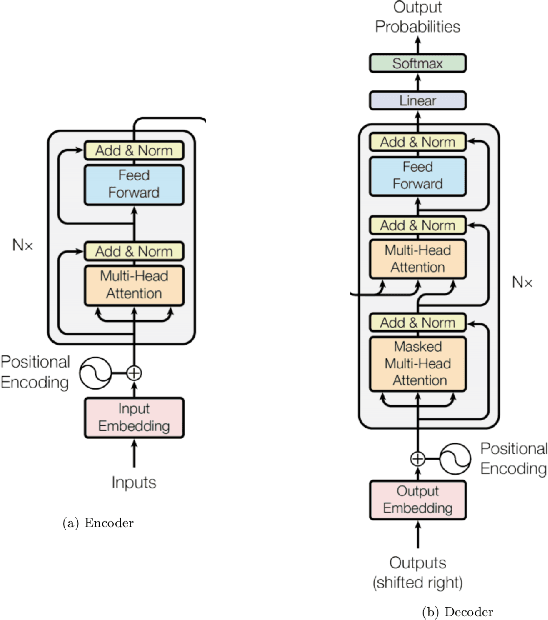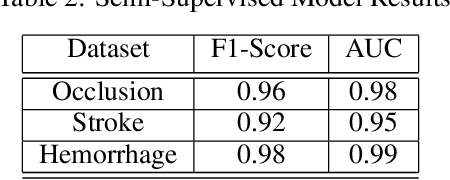Neil Deshmukh
Semi-Supervised Natural Language Approach for Fine-Grained Classification of Medical Reports
Nov 14, 2019



Abstract:Although machine learning has become a powerful tool to augment doctors in clinical analysis, the immense amount of labeled data that is necessary to train supervised learning approaches burdens each development task as time and resource intensive. The vast majority of dense clinical information is stored in written reports, detailing pertinent patient information. The challenge with utilizing natural language data for standard model development is due to the complex nature of the modality. In this research, a model pipeline was developed to utilize an unsupervised approach to train an encoder-language model, a recurrent network, to generate document encodings; which then can be used as features passed into a decoder-classifier model that requires magnitudes less labeled data than previous approaches to differentiate between fine-grained disease classes accurately. The language model was trained on unlabeled radiology reports from the Massachusetts General Hospital Radiology Department (n=218,159) and terminated with a loss of 1.62. The classification models were trained on three labeled datasets of head CT studies of reported patients, presenting large vessel occlusion (n=1403), acute ischemic strokes (n=331), and intracranial hemorrhage (n=4350), to identify a variety of different findings directly from the radiology report data; resulting in AUCs of 0.98, 0.95, and 0.99, respectively, for the large vessel occlusion, acute ischemic stroke, and intracranial hemorrhage datasets. The output encodings are able to be used in conjunction with imaging data, to create models that can process a multitude of different modalities. The ability to automatically extract relevant features from textual data allows for faster model development and integration of textual modality, overall, allowing clinical reports to become a more viable input for more encompassing and accurate deep learning models.
FD-Net with Auxiliary Time Steps: Fast Prediction of PDEs using Hessian-Free Trust-Region Methods
Oct 29, 2019



Abstract:Discovering the underlying physical behavior of complex systems is a crucial, but less well-understood topic in many engineering disciplines. This study proposes a finite-difference inspired convolutional neural network framework to learn hidden partial differential equations from given data and iteratively estimate future dynamical behavior. The methodology designs the filter sizes such that they mimic the finite difference between the neighboring points. By learning the governing equation, the network predicts the future evolution of the solution by using only a few trainable parameters. In this paper, we provide numerical results to compare the efficiency of the second-order Trust-Region Conjugate Gradient (TRCG) method with the first-order ADAM optimizer.
Low-Cost Device Prototype for Automatic Medical Diagnosis Using Deep Learning Methods
Jan 04, 2019



Abstract:This paper introduces a novel low-cost device prototype for the automatic diagnosis of diseases, utilizing inputted symptoms and personal background. The engineering goal is to solve the problem of limited healthcare access with a single device. Diagnosing diseases automatically is an immense challenge, owing to their variable properties and symptoms. On the other hand, Neural Networks have developed into a powerful tool in the field of machine learning, one that is showing to be extremely promising at computing diagnosis even with inconsistent variables. In this research, a cheap device was created to allow for straightforward diagnosis and treatment of human diseases. By utilizing Deep Neural Networks (DNNs) and Convolutional Neural Networks (CNNs), outfitted on a Raspberry Pi Zero processor ($5), the device is able to detect up to 1537 different diseases and conditions and utilize a CNN for on-device visual diagnostics. The user can input the symptoms using the buttons on the device and can take pictures using the same mechanism. The algorithm processes inputted symptoms, providing diagnosis and possible treatment options for common conditions. The purpose of this work was to be able to diagnose diseases through an affordable processor with high accuracy, as it is currently achieving an accuracy of 90% for Top-5 symptom-based diagnoses, and 91% for visual skin diseases. The NNs achieve performance far above any other tested system, and its efficiency and ease of use will prove it to be a helpful tool for people around the world. This device could potentially provide low-cost universal access to vital diagnostics and treatment options.
 Add to Chrome
Add to Chrome Add to Firefox
Add to Firefox Add to Edge
Add to Edge